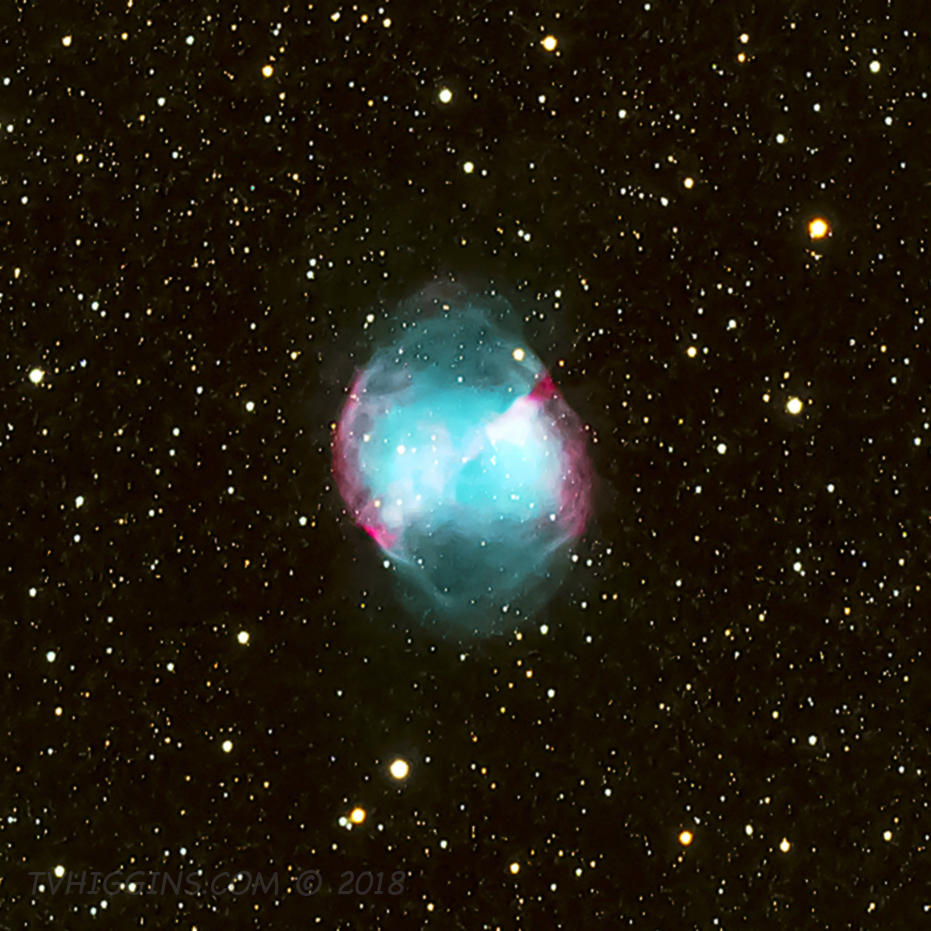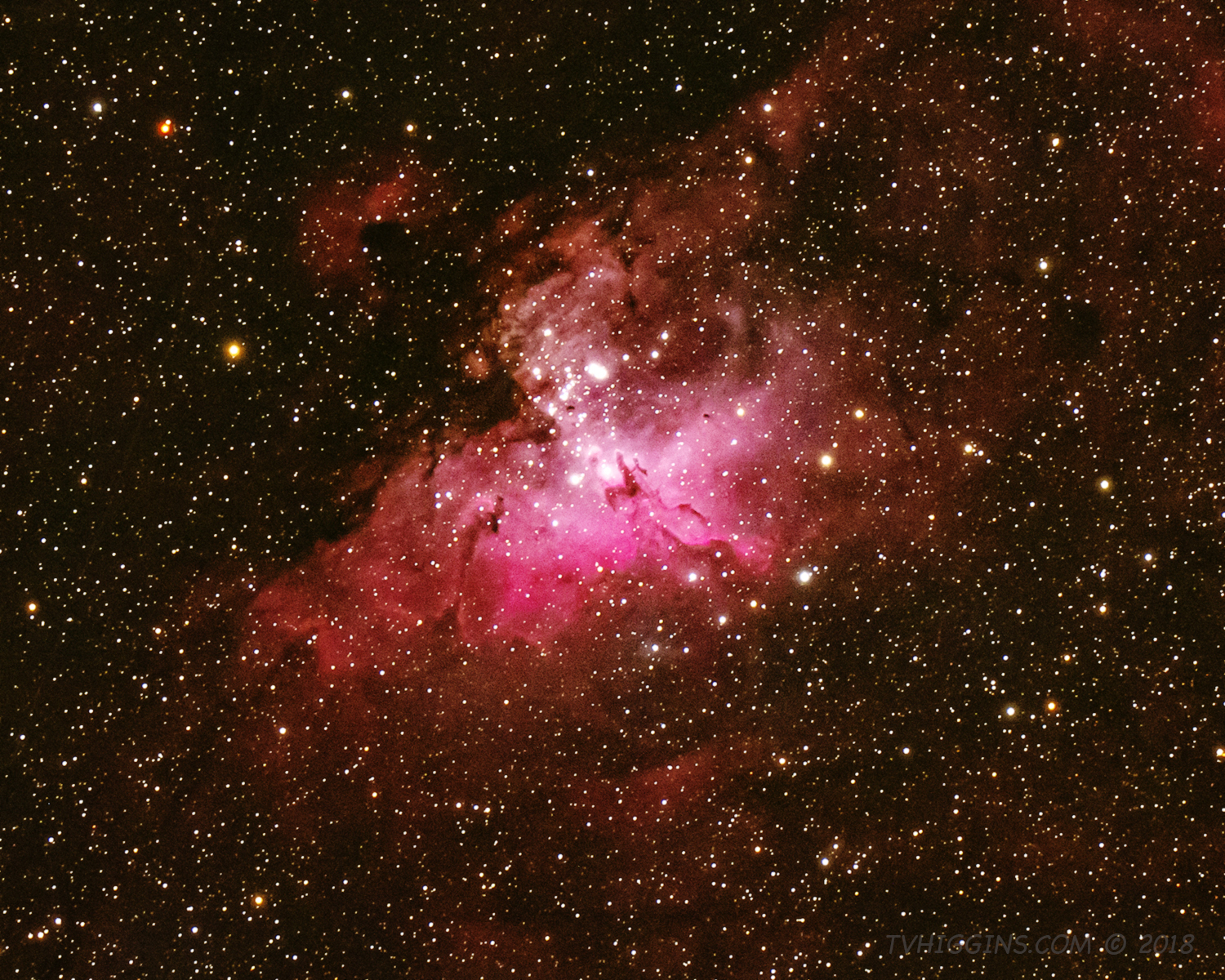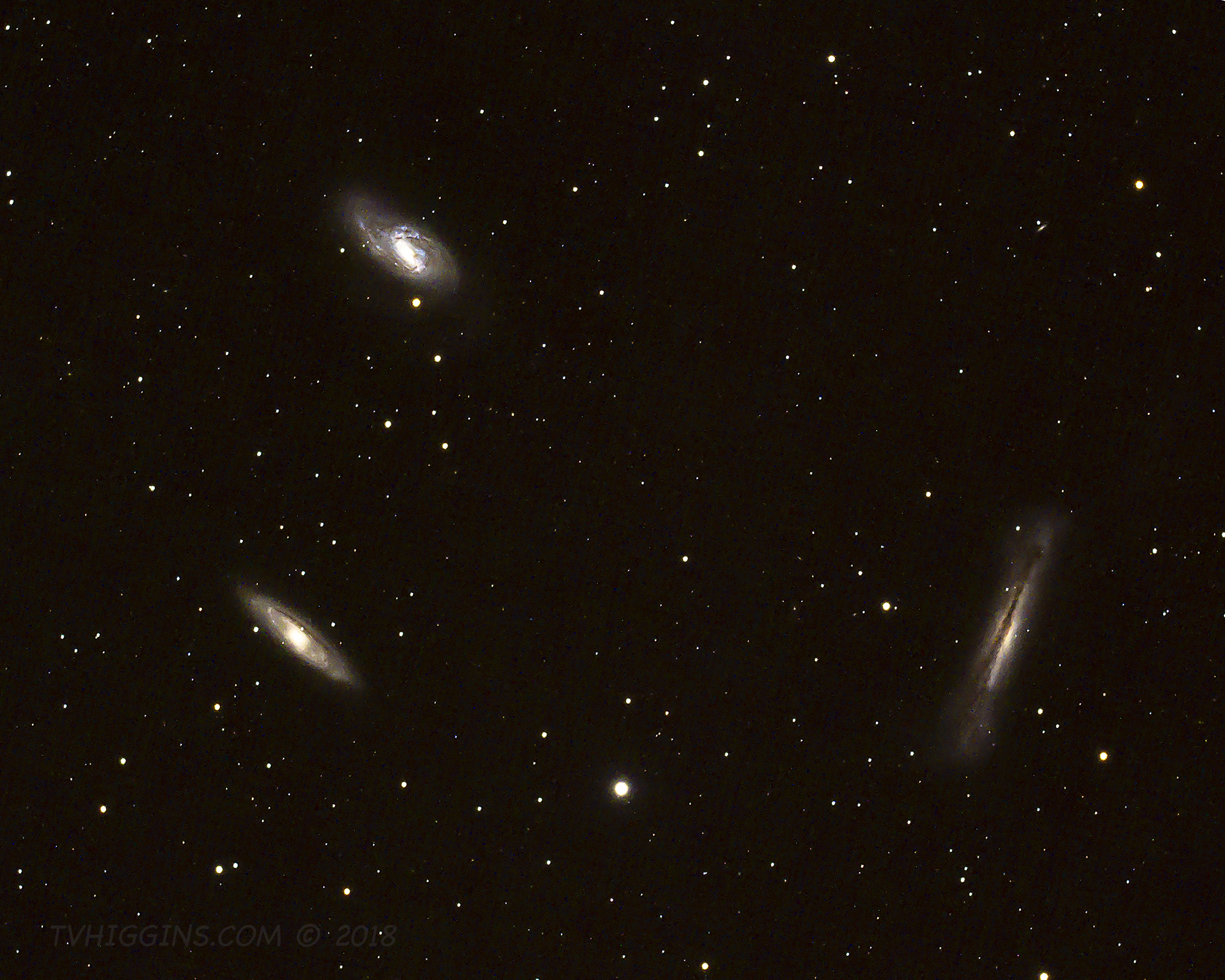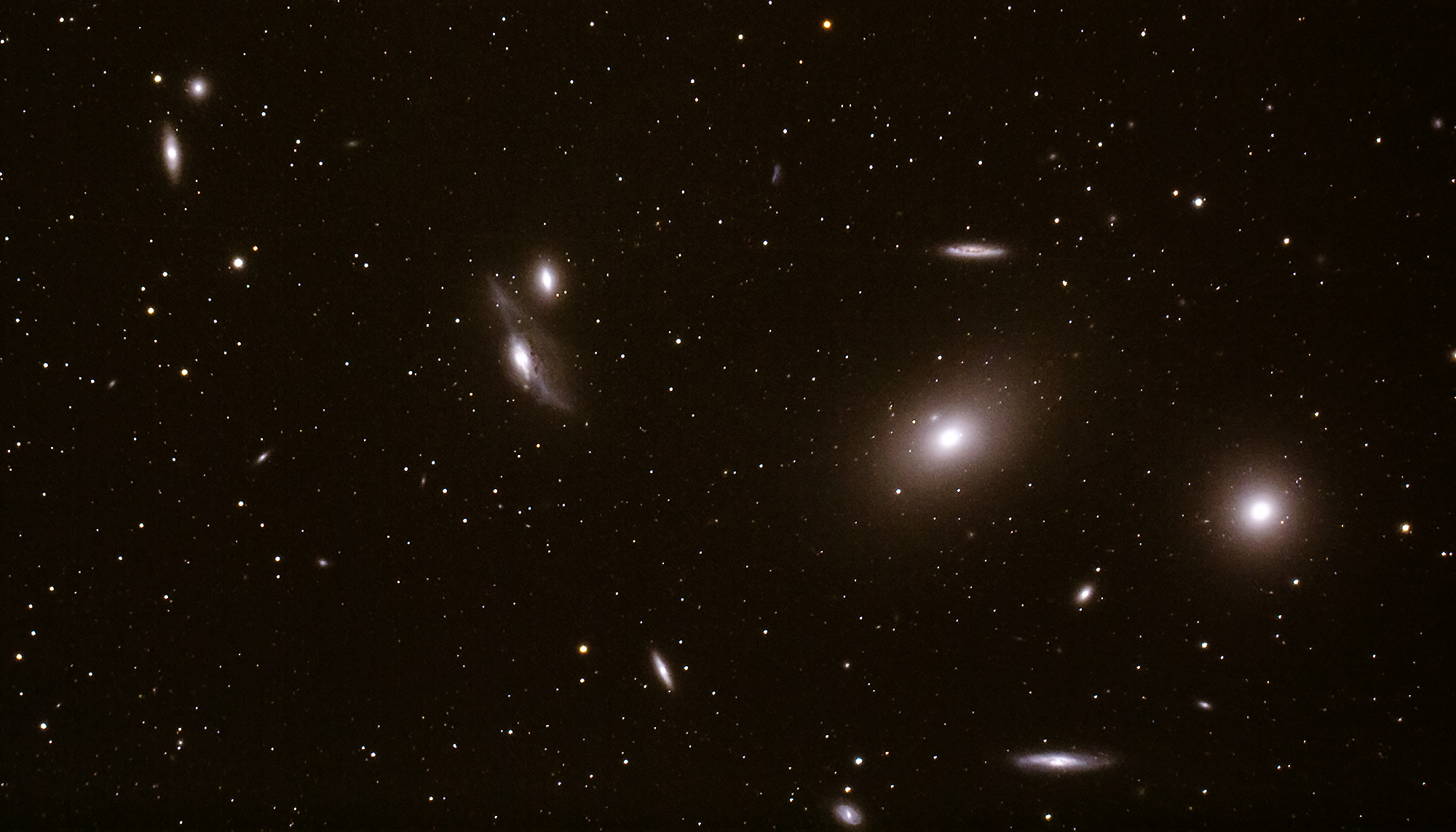The Dumbbell Nebula (M27)
- Telescope: Stellarvue SVA130T-IS
- Mount: Losmandy G-11 with Gemini 2 controller
- Autoguiding: Yes
- Optical Configuration: 0.72x field flattener & reducer (f/5)
- Camera: Canon 60Da
- Light Frames: 15, 300-s subframes stacked (75 min.)
- Calibration: None (no darks, no flats, no biases)
- Exposure Time(s): 75 min. (15 x 5 min.)
- ISO: 800
- Processing: Photoshop CC
- Imaging Location: Sierra Nevada Mountains (Altitude: 8,600 ft)
When a star reaches the end of its life, it sometimes leaves behind a colorful display of its demise called a “planetary nebula.” The Dumbbell Nebula (M27) is the largest such display in our sky, and certainly one of the most colorful. This planetary nebula is about 1 light-year across and about 1,360 light-years away, giving it an angular width of about 5 to 8 arcminutes in the nighttime sky, depending on which way you measure it. It may be as much as 14,600 years old and is “slowly” expanding at an estimated speed of 31 km/s, or about twice the speed of Voyager II as it leaves our solar system. The star responsible for this colorful ball of expanding gas can be seen at the exact center of the nebula in the image above.
The Dumbbell Nebula is located in the constellation Vulpecula (“little fox” in Latin) surrounded by a dense field of thousands of stars, as shown in this full-frame image below:





